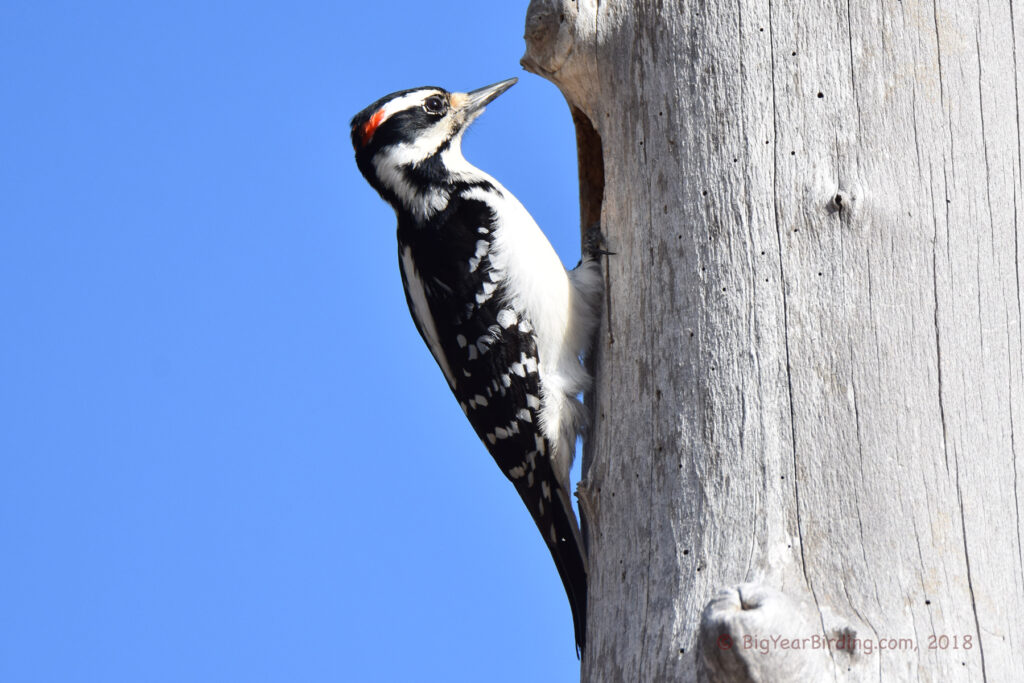
The Hairy Woodpecker is a species of bird that is native to North America. It is a medium-sized woodpecker, measuring approximately 7 to 9 inches in length and weighing between 1.5 to 3 ounces. This species is easily recognizable by its distinctive black and white markings, with a large white patch on its back and a white line running down the length of its tail. It also has a large, distinctive beak that is used to excavate holes in trees in search of insects.
The Hairy Woodpecker is found in a wide variety of habitats, including forests, woodlands, and suburban areas. It is a non-migratory bird, which means that it spends its entire life in the same area, although some individuals may make short movements within their range in search of food. During the winter months, this species feeds on insects and other invertebrates that are found under the bark of trees, as well as seeds and nuts that have fallen to the ground.

One of the most distinctive field marks of the Hairy Woodpecker is its long, stiff tail feathers. This species uses its tail as a prop while it is excavating holes in trees, as well as to maintain its balance while it is clinging to the trunk of a tree. Additionally, the Hairy Woodpecker has a strong, sharp beak that is perfectly adapted for chipping away at the bark of trees in search of food.
The Hairy Woodpecker is a solitary bird and is typically seen alone or in pairs. It is a fairly common species, with populations that are widely distributed throughout North America. Despite its widespread distribution, the Hairy Woodpecker is not considered to be at risk of extinction and is listed as a species of “Least Concern” by the International Union for Conservation of Nature (IUCN).

In conclusion, the Hairy Woodpecker is a distinctive and easily recognizable bird species that is widely distributed throughout North America. With its distinctive black and white markings, long tail feathers, and strong beak, it is an important part of the North American avian community and plays a vital role in the ecosystem by controlling insect populations and helping to maintain the health of the forests and woodlands in which it lives.
